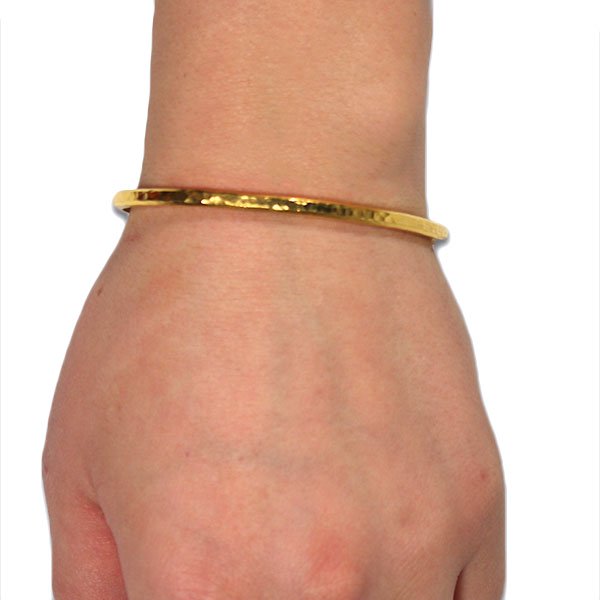So you’ve decided to invest in gold, a smart choice indeed. But before you dive into the world of gold investments, there’s one thing you need to understand – purity matters. Verifying the authenticity and quality of gold products is crucial to ensure you’re getting what you pay for. In this article, we’ll explore the importance of purity in gold, how it’s measured, and the different methods used to verify it. Whether you’re a seasoned investor or just starting out, understanding the purity of gold will give you the confidence to make informed investment decisions. Let’s get started! Investing in gold can be a smart financial move, but it’s important to understand the different types of gold and how to ensure their authenticity and quality. Purity matters when it comes to gold, as the higher the purity, the more valuable and sought-after the metal is. In this article, we will explore the various types of gold, how to identify counterfeits, trustworthy vendors to buy from, certification agencies to look out for, legal considerations, buying from online platforms, documenting your purchase, and maintaining gold quality.

This image is property of images.unsplash.com.
Different Types of Gold
24 Karat Gold
24 karat gold is the purest form of gold available, with a purity of 99.9%. It is often called “999 gold” to indicate its high level of purity. This type of gold is very soft and malleable, making it unsuitable for everyday jewelry. Due to its purity, 24 karat gold is highly valuable and often used for investment purposes or in special pieces of jewelry.
22 Karat Gold
22 karat gold consists of 91.7% pure gold, with the remaining 8.3% composed of other metals such as silver or copper. This alloy creates a stronger and more durable metal, making it a popular choice for jewelry pieces like rings and necklaces. 22 karat gold is often marked as “916 gold” to indicate its purity.
18 Karat Gold
18 karat gold contains 75% pure gold, with the remaining 25% made up of other metals. This type of gold is commonly used in fine jewelry and has a rich, warm color. The purity of 18 karat gold is marked as “750 gold.”
14 Karat Gold
14 karat gold consists of 58.3% pure gold and is mixed with a combination of other metals. This type of gold is commonly used in affordable jewelry pieces and is marked as “585 gold.”
10 Karat Gold
10 karat gold is the lowest karatage that can still be legally considered gold in the United States. It contains 41.7% pure gold and is mixed with other metals to increase its strength and durability. Jewelry made from 10 karat gold is marked as “417 gold.”
Understanding Purity Marks
When buying gold, it’s important to understand the various purity marks used to indicate the gold content of a piece. These marks can help you determine whether the gold is genuine and of high quality. Here are the most common purity marks to look out for:
Hallmarks
Hallmarks are official marks or stamps that indicate the quality and origin of a piece of gold. They are typically applied by a trusted authority, such as an assay office. Hallmarks can include information such as the karatage of the gold, the manufacturer’s mark, and the country of origin.
Fineness Marks
Fineness marks are used to express the purity of gold in parts per thousand. For example, a fineness mark of “999.9” means that the gold is 99.99% pure. These marks are often found on gold bars or bullion.
Mint Marks
Mint marks are specific identifiers used to indicate where a gold coin was minted. Mint marks can help authenticate a gold coin and determine its value. It’s important to research the various mint marks used by different countries before purchasing gold coins.

This image is property of images.unsplash.com.
Testing the Gold Purity
If you want to verify the purity of your gold, there are several testing methods available. Here are some commonly used methods:
Gold Acid Testing
Gold acid testing involves applying acid to a small scratch or mark on the gold item. The acid’s reaction will indicate the gold’s purity. Different acid solutions are used for different karatages of gold. This testing method should only be performed by professionals or experienced individuals, as it can be harmful if not done correctly.
Electronic Gold Testing
Electronic gold testing devices use electrical conductivity to determine the gold’s purity. These devices measure the resistance of the gold to an electric current and provide a digital reading indicating the karatage. Electronic gold testing is convenient and can be done quickly, but it’s important to use a reliable and accurate device.
X-Ray Fluorescence (XRF) Testing
XRF testing is a non-destructive method that uses X-ray technology to measure the composition of gold. This method can accurately determine the gold’s purity and also detect any impurities or alloys present in the metal. XRF testing is commonly used by professional jewelers and gold buyers.
Fire Assay Testing
Fire assay testing is a highly accurate method for determining the gold content of a sample. It involves melting the gold and separating the precious metal from impurities. Fire assay testing is a complex and time-consuming process usually performed in specialized laboratories.
Identifying Counterfeits
Counterfeit gold exists in the market, and it’s important to be able to identify it to avoid scams. Here are some methods to help identify counterfeit gold:
Weight and Feel
Genuine gold has a distinct weight and feel due to its density. If a piece of gold feels unusually light or cheap, it may be a sign of counterfeit material. Additionally, counterfeit gold may have inconsistencies in its weight compared to genuine gold items.
Magnetic Attraction
Real gold is not magnetic, so if a piece of gold is attracted to a magnet, it is likely counterfeit. This method can help quickly identify fake gold items, especially if they are made with magnetic metals or alloys.
Color
Pure gold has a distinct, rich yellow color. Counterfeit gold may have a slightly different shade or hue, particularly if it is made with alloys or other metals. It’s important to compare the color of a piece of gold to known genuine gold items to ensure its authenticity.
Acid Testing
As mentioned earlier, acid testing can be a useful method for testing the purity of gold. By applying acid to a small mark on the gold item, the reaction can indicate whether it is genuine gold. However, acid testing should only be performed by professionals, as it requires specialized knowledge and appropriate safety measures.
Microscopic Examination
A microscopic examination of a gold item can reveal any inconsistencies, imperfections, or signs of counterfeit craftsmanship. Counterfeit gold may have visible seams, uneven surfaces, or poor finishing. Using a jeweler’s loupe or a microscope can help identify these details.

This image is property of images.unsplash.com.
Trustworthy Vendors
When purchasing gold, it’s essential to buy from trustworthy vendors to ensure you are getting genuine and high-quality products. Here are some types of vendors you can rely on:
Reputable Jewelers
Established and reputable jewelers with a long history of selling genuine gold products are a reliable source to consider. Look for jewelers who have positive customer reviews and are known for their expertise in gold. They can guide you through the buying process and offer advice on selecting the right gold items.
Authorized Dealers
Authorized dealers are authorized by specific gold mints or organizations to sell their products. Buying from authorized dealers ensures that the gold items are genuine and have been produced by reputable manufacturers. These dealers often have a direct connection to the source, which reduces the risk of counterfeit products.
Certification Agencies
Certification agencies and organizations play a crucial role in verifying the authenticity and quality of gold products. They provide certifications, hallmarks, and other identification marks that guarantee the gold’s purity. Look for gold items certified by renowned agencies like the World Gold Council, Bureau Veritas, or Assay Offices.
Certification Agencies
Certification agencies are responsible for ensuring the quality and authenticity of gold products. Here are some well-known certification agencies to look out for:
World Gold Council
The World Gold Council is a leading authority in the gold industry that provides certifications and hallmarking for gold products. Their mark indicates the gold’s purity and serves as a globally recognized standard for quality.
Bureau Veritas
Bureau Veritas is an independent testing, inspection, and certification company that offers gold assaying services. They have a reputation for providing accurate and reliable certification of gold products.
Assay Offices
Assay Offices are government-recognized facilities responsible for assaying and hallmarking gold items. These offices are regulated and ensure that gold products meet the required quality standards. Check for hallmarks from renowned assay offices when purchasing gold.
Legal Considerations
Before buying gold, it’s important to understand the legal considerations surrounding gold investments and purchases. Here are some key legal aspects to keep in mind:
Consumer Protection Laws
Consumer protection laws are in place to safeguard buyers from fraudulent practices and ensure they receive genuine and high-quality goods. Familiarize yourself with the consumer protection laws in your country or jurisdiction to understand your rights as a gold buyer.
Licensing and Regulation
Gold vendors, especially those dealing with investment-grade gold, are often subject to licensing and regulation by government authorities or financial institutions. Make sure the vendor you choose is properly licensed and regulated to ensure compliance with industry standards and regulations.
Return Policy
When purchasing gold, inquire about the vendor’s return policy. A reputable vendor will have a clear and fair return policy that allows you to return or exchange gold items if they do not meet your expectations or if you have concerns about their authenticity.
Buying from Online Platforms
Online platforms offer convenience and accessibility when it comes to buying gold. However, it’s essential to take certain precautions to ensure a safe and secure online purchase. Here are some tips for buying gold from online platforms:
Research and Reviews
Before making a purchase, conduct thorough research on the online platform and the vendor selling the gold. Look for customer reviews and testimonials to gauge the vendor’s reputation and reliability. Choose platforms that have established themselves as trustworthy sources for buying gold.
Seller Ratings
Pay attention to the seller ratings or feedback provided by previous buyers. Top-rated sellers with positive reviews are more likely to provide genuine and high-quality gold products. Avoid sellers with low ratings or a history of negative customer experiences.
Secure Payment Methods
When buying gold online, use secure payment methods that offer buyer protection, such as credit cards or reputable online payment platforms. These methods provide an additional layer of security and may offer refunds or dispute resolution services if the purchased gold is found to be counterfeit or of poor quality.
Documenting Your Purchase
Documenting your gold purchase is crucial for several reasons, such as proving ownership, determining value for insurance purposes, and ensuring authenticity. Here are some essential documents you should obtain when buying gold:
Receipts
Always ask for a detailed receipt or invoice that includes information about the gold item, such as its karatage, weight, and price. The receipt serves as proof of purchase and can be useful for future reference or if you decide to sell the gold in the future.
Appraisals
Consider getting the gold item appraised by a certified appraiser. An appraisal provides an objective evaluation of the gold’s quality and value, which can be helpful for insurance purposes or if you plan to sell the gold at a later date.
Insurance
If you own valuable gold items, it’s wise to consider insuring them. Speak with your insurance provider to understand the coverage options available for your gold. Having insurance protects you against loss, theft, damage, or other unfortunate events that could result in a financial loss.
Maintaining Gold Quality
To ensure the longevity and beauty of your gold items, it’s important to properly care for them. Here are some tips for maintaining gold quality:
Proper Storage
Store your gold items in a secure and dry place to avoid scratches, dents, or exposure to harsh elements. Use jewelry boxes with individual compartments or soft cloth pouches to prevent jewelry from rubbing against each other and causing damage.
Regular Cleaning
Clean your gold items regularly to remove dirt, oils, and other substances that can dull the metal’s shine. Use a mild soap diluted in warm water and a soft brush or cloth to gently clean the gold. Avoid using abrasive materials or harsh cleaning products that can scratch or damage the gold.
Avoiding Harsh Chemicals
Gold is a relatively soft metal and can be susceptible to damage from harsh chemicals. Avoid exposing your gold items to substances such as chlorine, bleach, or other household cleaning agents. Remove gold jewelry before swimming, bathing, or engaging in activities that may expose the gold to chemicals.
Investing in gold can be a rewarding venture, but it’s crucial to gain a thorough understanding of the different types of gold, how to verify its authenticity and quality, and where to purchase from trustworthy vendors. By following the tips and information provided in this article, you can make informed decisions when it comes to buying, owning, and maintaining gold. Remember to always research, consult reliable sources, and take necessary precautions to protect your investments and enjoy the beauty and value of gold.



